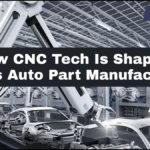In 2025, power continuity is not just a safety net—it’s a business imperative. From data centers and manufacturing plants to critical infrastructure and hospitals, a well-designed industrial UPS (Uninterruptible Power System) is essential for minimizing downtime and preventing costly disruptions. This Industrial UPS Guide 2025 will walk you through the key considerations, types of UPS systems, application-specific tips, and emerging technologies to help you select the right system for your operation.

Why Industrial UPS Systems Matter More Than Ever
Industrial environments face unique challenges—voltage fluctuations, harsh conditions, and mission-critical processes that can’t afford a second of downtime. An industrial uninterruptible power system provides immediate backup when the grid fails, allowing your systems to remain online until power is restored or generators kick in.
In an era where automation, IoT devices, and energy demands are growing rapidly, having a reliable UPS system isn’t optional. It’s foundational to operational stability and data integrity.
Key Types of Industrial UPS Systems
Choosing the right UPS starts with understanding the types available and how they function under load.
1. Offline/Standby UPS
Best suited for non-critical loads, these are basic systems that switch to battery backup when power goes out. They’re not recommended for industrial applications due to their delay in switching and limited power quality regulation.
2. Line-Interactive UPS
A step up from offline units, line-interactive systems offer automatic voltage regulation (AVR) and are suitable for moderate industrial tasks like network closets or smaller automation setups. They respond more quickly and handle minor fluctuations without switching to battery.
3. Online Double Conversion UPS
This is the gold standard for industrial use. These systems constantly convert incoming AC to DC and back to AC, ensuring a seamless, clean, and stable power supply. They’re designed for environments where even a millisecond of power loss is unacceptable—such as in pharmaceutical manufacturing or semiconductor fabrication.
4. Delta Conversion UPS
These advanced systems offer improved efficiency and lower energy losses compared to traditional online UPS systems. They’re increasingly used in large-scale industrial operations where energy cost savings and reduced heat generation are priorities.
Factors to Consider When Choosing an Industrial UPS in 2025
Selecting the right UPS isn’t just about size or price—it’s about long-term reliability and suitability. Here’s what to look for:
Load Requirements
Calculate the total wattage your critical equipment draws. Add a buffer (typically 25–30%) to accommodate expansion and surge demands.
Runtime Needs
How long do you need the UPS to keep systems running? If generator backup is available, 10–15 minutes may be enough. For remote or isolated operations, you may need longer runtimes or modular battery packs.
Environmental Conditions
Industrial settings may expose UPS systems to dust, temperature extremes, humidity, or vibrations. Make sure the system is ruggedized and built to operate under your specific conditions.
Scalability
Choose systems that allow you to expand capacity as your operation grows. Modular UPS designs enable flexible scaling without full replacement.
Monitoring and Integration
Modern uninterruptible power systems should include intelligent monitoring tools, SNMP support, and integration with building or industrial management systems for real-time data and predictive maintenance alerts.
Emerging Trends in Industrial UPS for 2025
The UPS market is evolving, and staying current with technology can offer serious operational advantages:
-
Lithium-Ion Batteries: Longer lifespan, faster recharge, and smaller footprint compared to traditional VRLA batteries.
-
Smart UPS Systems: Integration with AI-driven monitoring platforms to predict component failure and optimize energy use.
-
Energy Storage Capabilities: Some UPS systems now double as energy storage units, participating in peak shaving or demand response programs to reduce utility costs.
-
Eco-Mode Efficiency: UPS units with high-efficiency operation modes (up to 99%) reduce waste and operating costs without sacrificing reliability.
Application-Specific Recommendations
Manufacturing Facilities
Go for robust online double-conversion UPS units with high ingress protection (IP) ratings. These systems can handle machine tool loads and protect PLCs (Programmable Logic Controllers).
Healthcare and Labs
Clean power is critical for sensitive medical equipment. Look for UPS systems certified to meet medical-grade standards, with dual redundancy and swappable modules for maintenance without shutdowns.
Data Centers
Scalable UPS systems with intelligent battery management and hot-swappable modules are ideal. Prioritize high availability, redundancy (N+1 or 2N), and real-time monitoring.
Final Thoughts
Choosing the right industrial UPS in 2025 is about more than just avoiding downtime—it’s about future-proofing your operations. A well-matched uninterruptible power system provides the resilience, adaptability, and intelligence your business needs to stay competitive in a fast-changing world.
Whether you’re upgrading an aging system or designing a power backup solution from scratch, let the Industrial UPS Guide 2025 be your go-to reference.
Frequently Asked Questions
Q1: How do I calculate the right size for my industrial UPS?
Start by listing all connected equipment and their power ratings (in watts or VA). Sum them up and multiply by 1.25 to ensure capacity for future growth or spikes.
Q2: What’s the typical lifespan of an industrial UPS?
A high-quality UPS system can last 10–15 years, but batteries typically need replacement every 3–5 years. Lithium-ion options can extend this to 7–10 years.
Q3: Is it worth investing in lithium-ion over VRLA batteries?
Yes, especially for critical or high-load applications. Lithium-ion batteries offer better performance, lower maintenance, and a longer lifespan, which can offset the higher upfront cost.
Q4: Can an industrial UPS handle inductive loads like motors?
Yes, but the system must be sized appropriately. Motors have high inrush currents, so the UPS must be designed to handle these without overloading.
Q5: What maintenance is required for industrial UPS systems?
Routine battery checks, firmware updates, dust cleaning, and system diagnostics. Most modern systems come with self-diagnostics and alerts for proactive maintenance.
click here to learn more



